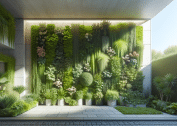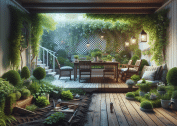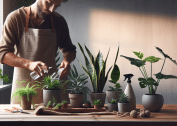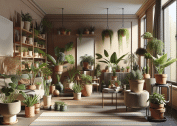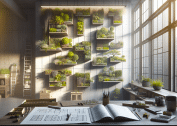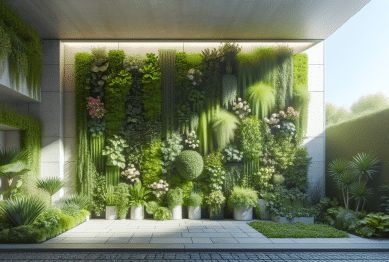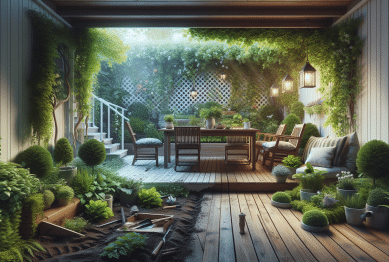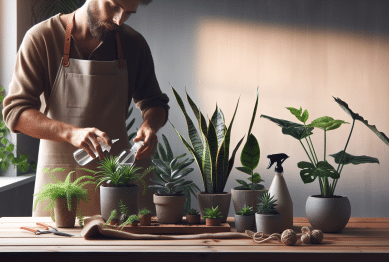In today’s fast-paced world, where stress and noise often dominate our daily lives, the concept of creating peaceful, serene spaces at home has become a significant trend. More people are looking for ways to cultivate an environment that fosters relaxation and mental well-being. Whether it’s through minimalist design or integrating natural elements, interior design that encourages relaxation is shaping how we interact with our living spaces. This article delves into current trends and tips for creating a home that promotes tranquility.
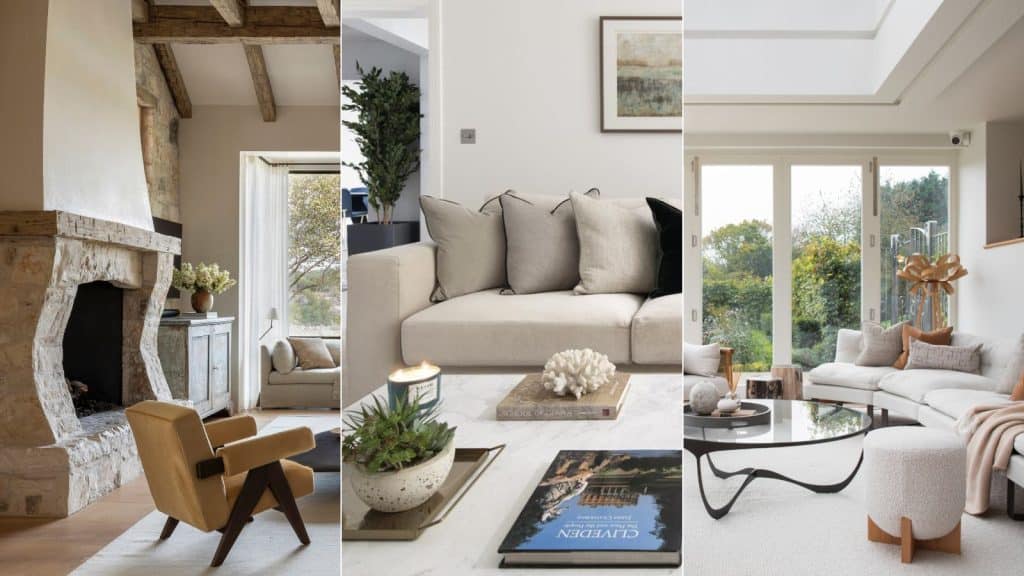
Understanding the Importance of Relaxation Spaces in Interior Design
Incorporating relaxation into interior design isn’t just about making a space look good; it’s about creating an atmosphere that supports mental and emotional health. According to a 2023 study published by the National Institute of Environmental Health Sciences, the design of the spaces we live in can directly affect our mood and stress levels. The trend of using interior design to promote relaxation is rooted in the need for comfort and healing. People are increasingly seeking calm, quiet places in their homes that allow them to unwind after a long day.
Trends in Relaxing Interior Design
1. Biophilic Design: Bringing the Outdoors In
Biophilic design is a hot trend in 2025. By integrating elements of nature into the home, such as plants, natural light, and organic materials, this design style is all about creating an atmosphere that reflects the natural world. Plants, especially indoor greenery, have been shown to improve air quality and lower stress levels. A study conducted by the University of Queensland found that the presence of plants in indoor environments can lead to a significant reduction in stress and anxiety.
- Practical Tips:
- Incorporate potted plants like succulents, ferns, or peace lilies.
- Consider having large indoor plants such as rubber trees or palms to create a statement piece.
- Use natural materials like wood and stone for furniture or flooring.
Biophilic design aims to create a space that feels grounded and connected to nature. The subtle sounds of water features or even natural light streaming through strategically placed windows can transform any room into a calming haven.
2. Minimalism: Less is More
The minimalist movement, which has been gaining popularity for years, continues to thrive as people look for ways to reduce clutter and stress in their homes. The philosophy of “less is more” helps create clean and simple spaces that encourage mental clarity. By removing excess furniture, art, or decorations, minimalist design creates more room for stillness and focus.
- Practical Tips:
- Choose furniture with simple lines and neutral colors.
- Use storage solutions that keep things out of sight, such as sleek cabinets or under-bed storage.
- Prioritize functionality over decoration.
A minimalist approach allows your mind to feel less overwhelmed by the excess that typically accumulates in a traditional home. The aesthetic simplicity is both visually soothing and mentally restorative.
3. Soft, Soothing Color Palettes
The use of soft, muted colors has become a key trend in creating relaxation spaces. Shades of light blue, soft gray, pale pink, and pastel green can evoke calmness and relaxation. Research from the University of Sussex found that exposure to soothing colors has a positive effect on the brain, helping to reduce feelings of anxiety.
- Practical Tips:
- Use soft, muted hues on walls, upholstery, and accessories.
- Introduce accent colors in subtle ways, such as through cushions, rugs, or curtains.
- Avoid bold or overly bright colors that can be energizing or distracting.
The psychological effects of color in interior design cannot be overstated. A peaceful color palette encourages serenity and aids in de-stressing, making it easier to unwind.
4. Lighting for Relaxation
Lighting plays a crucial role in relaxation. Harsh, artificial lighting can cause tension and disrupt sleep patterns. In contrast, soft, warm lighting creates a more soothing environment. Ambient lighting, rather than task lighting, is preferred in relaxation areas such as living rooms and bedrooms.
- Practical Tips:
- Opt for floor lamps or table lamps with soft, dimmable lighting.
- Use LED candles or soft wall sconces for a warm glow.
- Take advantage of natural light whenever possible.
Adding layers of lighting through various sources such as candles, dimmable lights, or even string lights can help foster a calm environment. It’s also important to invest in window treatments like light curtains that allow natural light to flow in without glare.
5. Aromatherapy and Relaxing Scents
Scent is a powerful tool when it comes to relaxation. Aromatherapy is increasingly being incorporated into interior design through the use of essential oils, diffusers, and candles. Lavender, chamomile, and eucalyptus are known for their calming effects on the mind and body.
- Practical Tips:
- Use essential oil diffusers or candles in key areas like the bedroom or living room.
- Experiment with calming scents like lavender, jasmine, or sandalwood.
- Incorporate scent into fabrics through pillow covers, blankets, or curtains infused with aromatic oils.
The power of scent is undeniable—smells like lavender have been shown to reduce stress and promote better sleep, which makes it a perfect addition to any relaxation-focused room.
6. Comfortable, Inviting Furniture
Comfort is key in any relaxing space. The furniture in your home should not only look good but also provide comfort and support. Cushioned furniture, ergonomic chairs, and soft textiles can help to create spaces where you can truly unwind.
- Practical Tips:
- Choose plush sofas or armchairs that invite you to relax and sink into them.
- Incorporate throws and soft pillows for added comfort.
- Ensure that your furniture is arranged in a way that promotes conversation or quiet contemplation, depending on your needs.
A comfortable chair or couch becomes a focal point in a relaxation room, making it a place where you can unwind, read a book, or simply meditate.
Incorporating Technology in Relaxing Interior Design
While natural elements and minimalist aesthetics are essential, technology also plays an increasingly important role in relaxation spaces. Smart home devices, like sound systems for calming music or white noise machines, can enhance the atmosphere. Smart thermostats that regulate room temperature and voice-controlled lighting systems can also contribute to the overall comfort and relaxation of your home.
- Practical Tips:
- Set up a sound system that can play calming music or nature sounds.
- Install a smart thermostat to adjust the temperature based on your preferences.
- Use smart lights that can change color temperatures to suit different moods throughout the day.
By blending technology and nature, modern interior designs can enhance your ability to relax and focus on well-being.
Conclusion: Creating Your Relaxation Oasis
Interior design that encourages relaxation is about more than just aesthetics—it’s about crafting an environment that nurtures mental well-being. Whether it’s through biophilic elements, minimalist design, soft colors, or cozy furniture, these trends are all about making your home a sanctuary from the stresses of modern life. By incorporating these elements, you can create a living space that not only looks good but feels good, helping you to achieve a sense of calm and relaxation every time you step inside.
References
- University of Queensland. (2023). The effects of indoor plants on stress and anxiety levels. Available at: https://www.uq.edu.au (Accessed: 19 August 2025).
- National Institute of Environmental Health Sciences. (2023). The role of home environments in mental health and well-being. Available at: https://www.niehs.nih.gov (Accessed: 19 August 2025).
- How biophilic design improves productivity and mental health in the home. Architectural Digest. Available at: https://www.architecturaldigest.com (Accessed: 19 August 2025).


